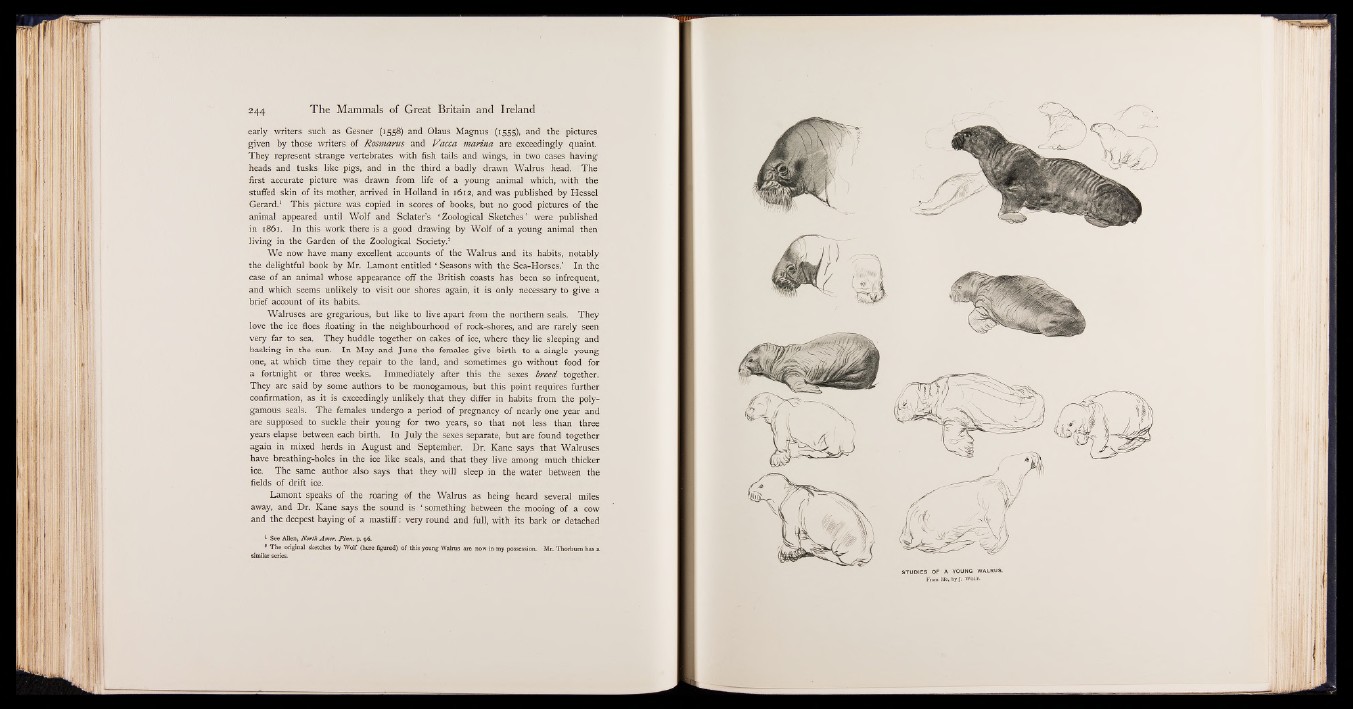
early writers such as Gesner (1558) and Olaus Magnus (1555), and the pictures
given by those writers of Rosmarus and Vacca marina are exceedingly quaint.
They represent strange vertebrates with fish tails and wings, in two cases having
heads and tusks like pigs, and in the third a badly drawn Walrus head. The
first accurate picture was drawn from life of a young animal which, with the
stuffed skin of its mother, arrived in Holland in 1612, and was published by Hessel
Gerard.1 This picture was copied in scores of books, but no good pictures of the
animal appeared until Wolf and Sclater’s ‘ Zoological Sketches ’ were published
in 1861. In this work there is a good drawing by Wolf of a young animal then
living in the Garden of the Zoological Society.2
We now have many excellent accounts of the Walrus and its habits, notably
the delightful book by Mr. Lamont entitled ‘ Seasons with the Sea-Horses.’ In the
case of an animal whose appearance off the British coasts has been so infrequent,
and which seems unlikely to visit our shores again, it is only necessary to give a
brief account of its habits.
Walruses are gregarious, but like to live apart from the northern seals. They
love the ice floes floating in the neighbourhood of rock-shores, and are rarely seen
very far to sea. They huddle together on cakes of ice, where they lie sleeping and
basking in the sun. In May and June the females give birth to a single young
one, at which time they repair to the land, and sometimes go without food for
a fortnight or three weeks. Immediately after this the sexes breed together.
They are said by some authors to be monogamous, but this point requires further
confirmation, as it is exceedingly unlikely that they differ in habits from the polygamous
seals. The females undergo a period of pregnancy of nearly one year and
are supposed to suckle their young for two years, so that not less than three
years elapse between each birth. In July the sexes separate, but are found together
again in mixed herds in August and September. Dr. Kane says that Walruses
have breathing-holes in the ice like seals, and that they live among much thicker
ice. The same author also says that they will sleep in the water between the
fields of drift ice.
Lamont speaks of the roaring of the Walrus as being heard several miles
away, and Dr. Kane says the sound is ‘ something between the mooing of a cow
and the deepest baying of a mastiff: very round and full, with its bark or detached
1 See Allen, North Amer. Pintle p. 96.
* The original sketches by Wolf (here figured) of this young Walrus are now in my possession. Mr. Thorbum has a
similar series.